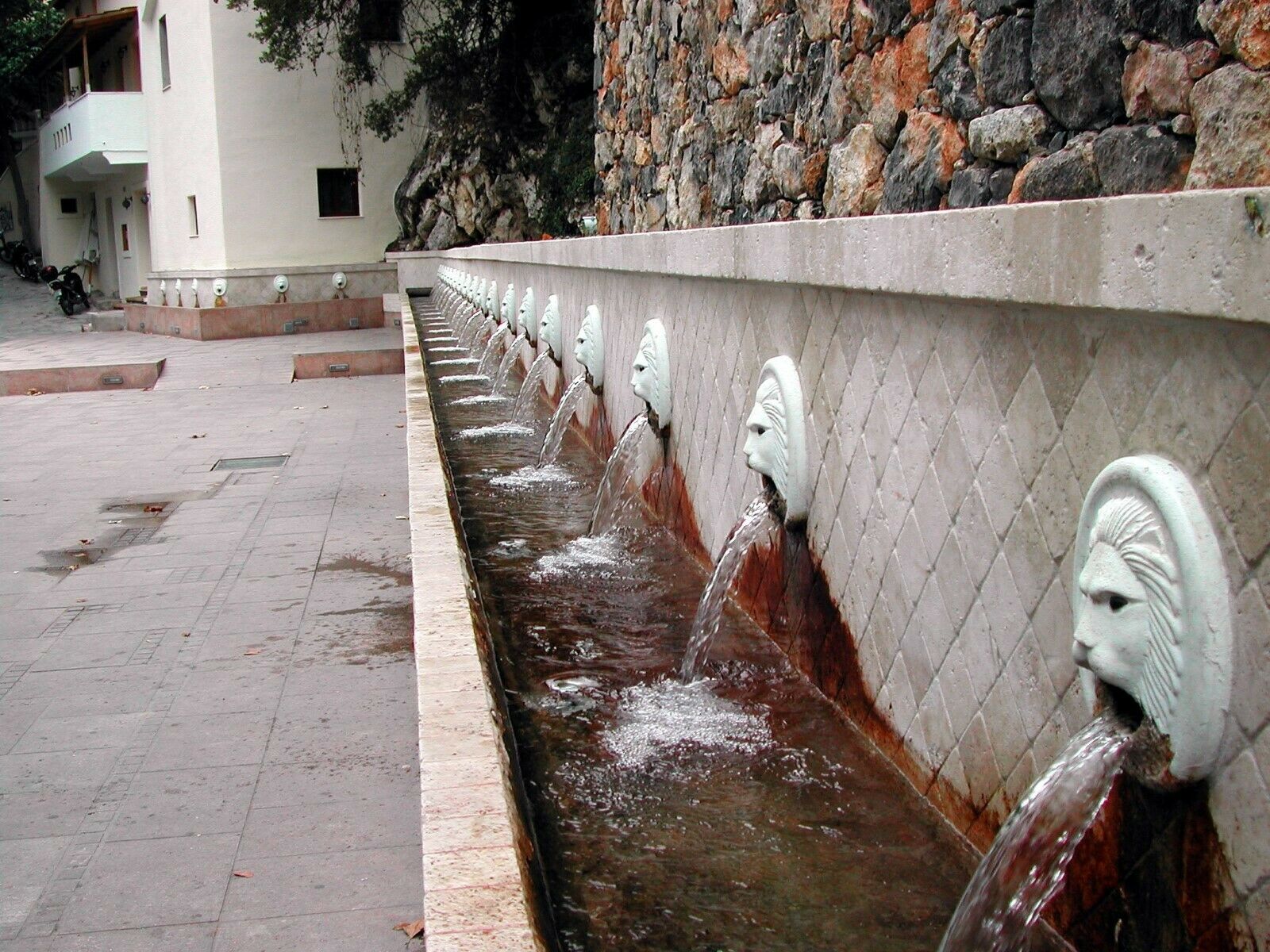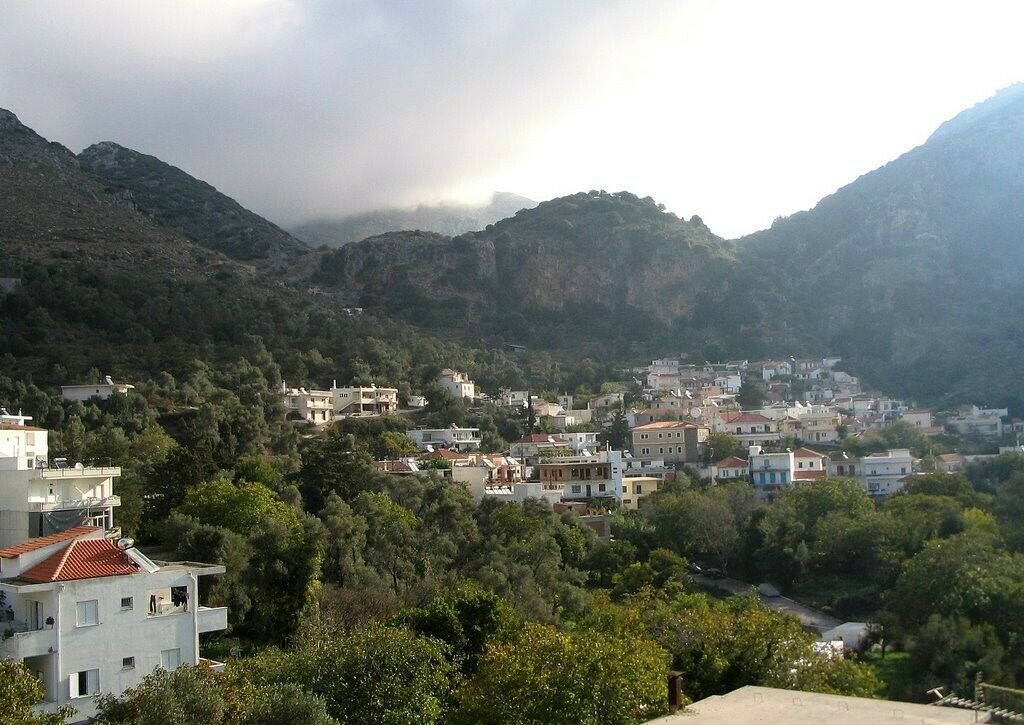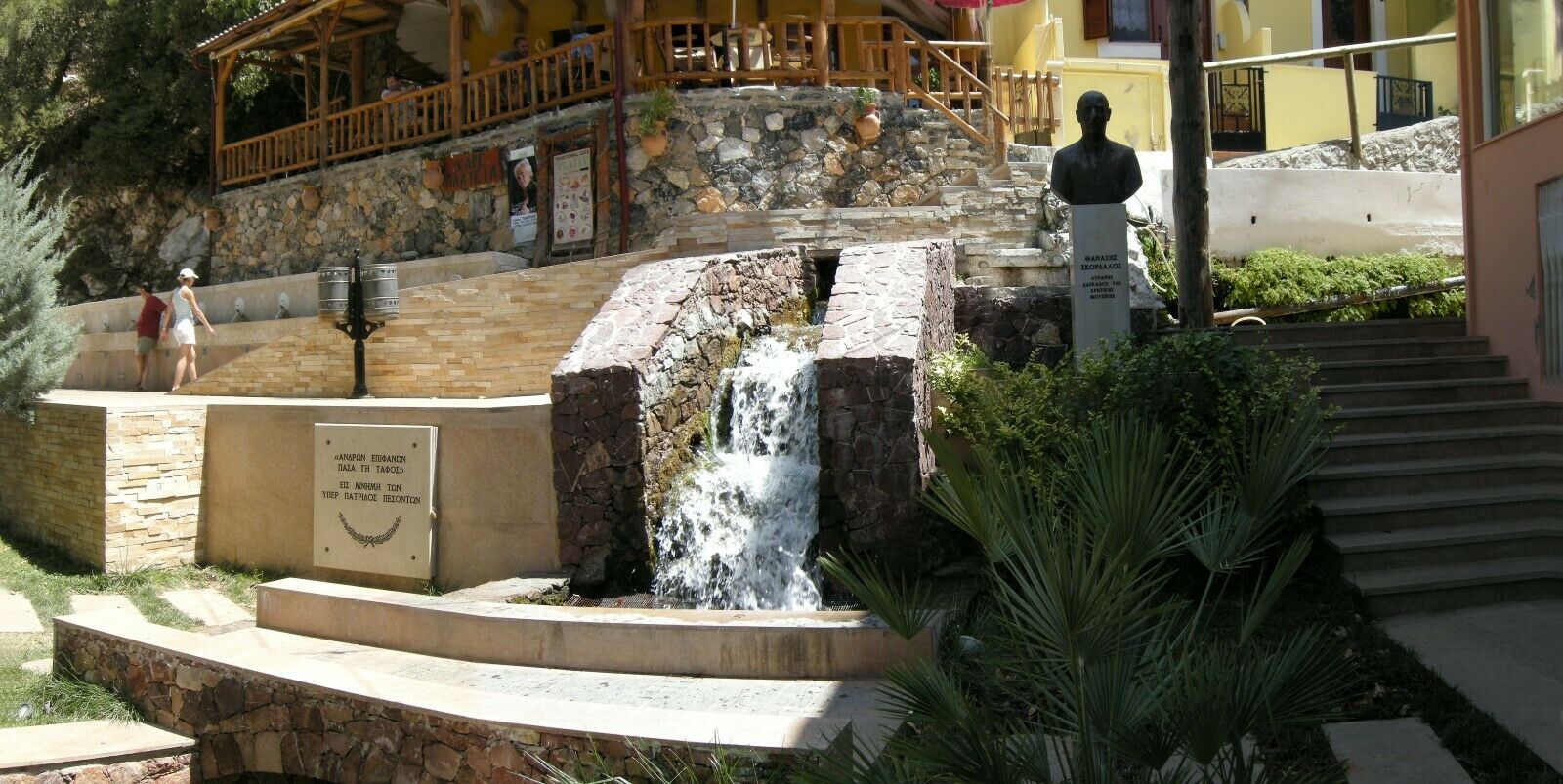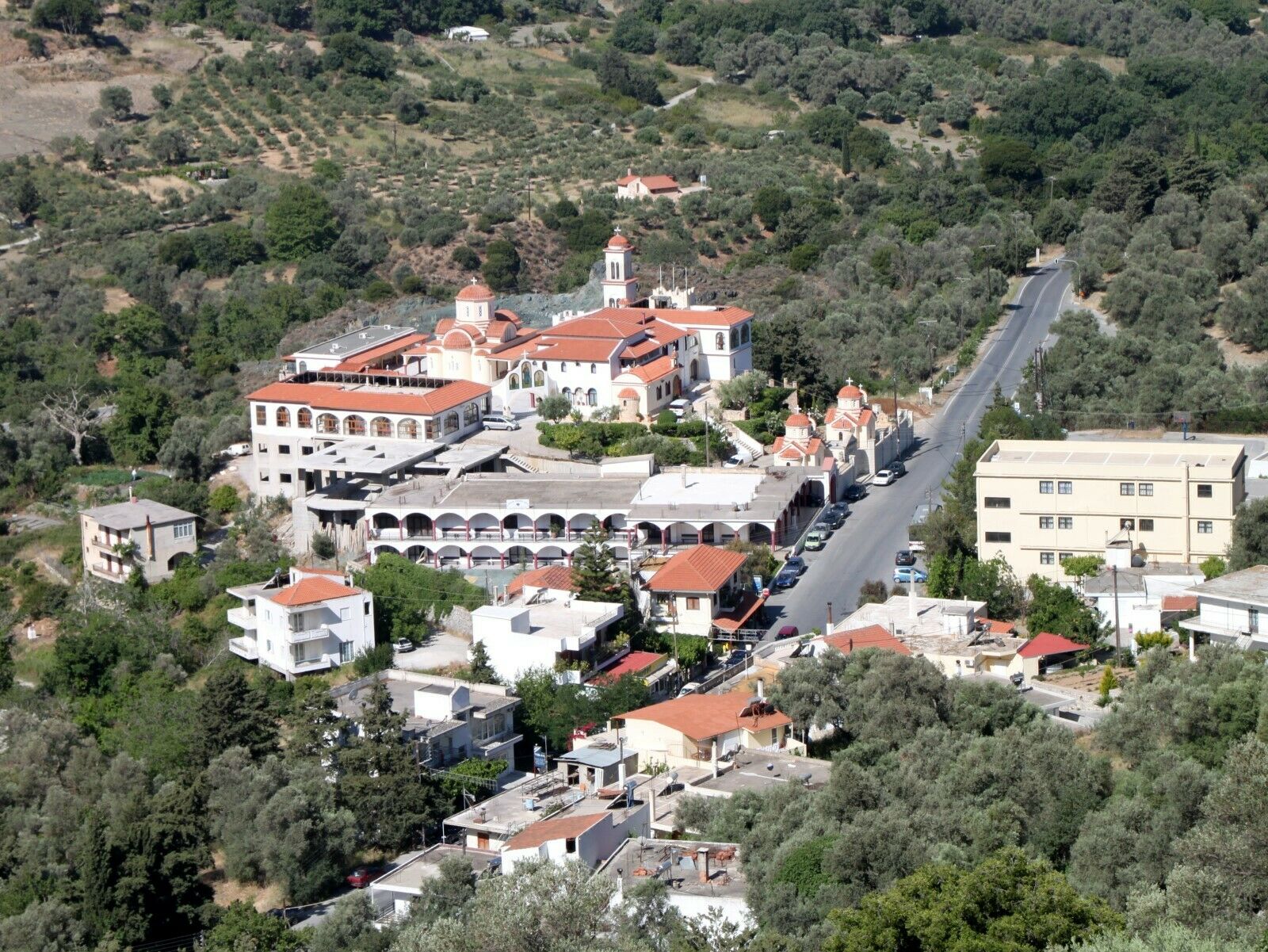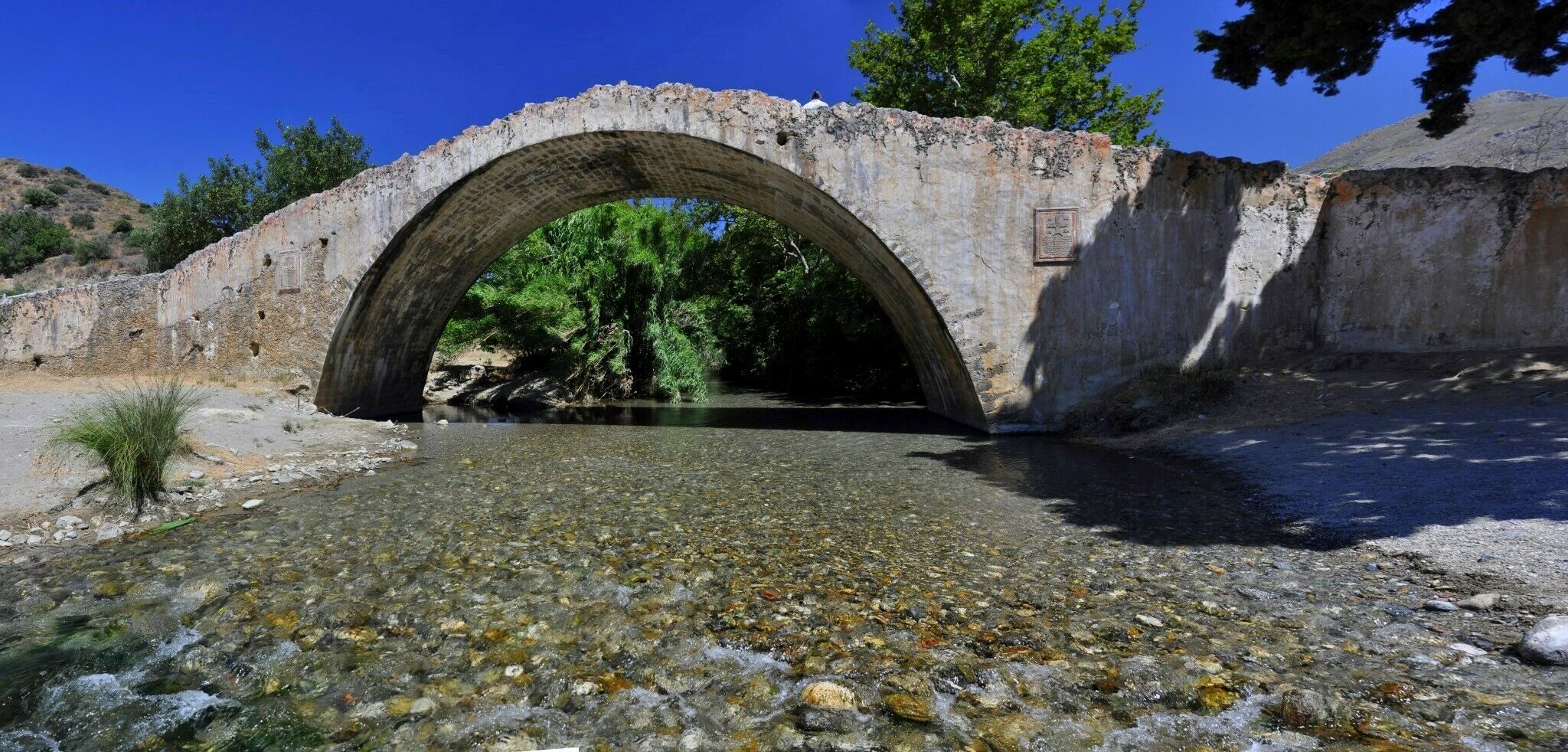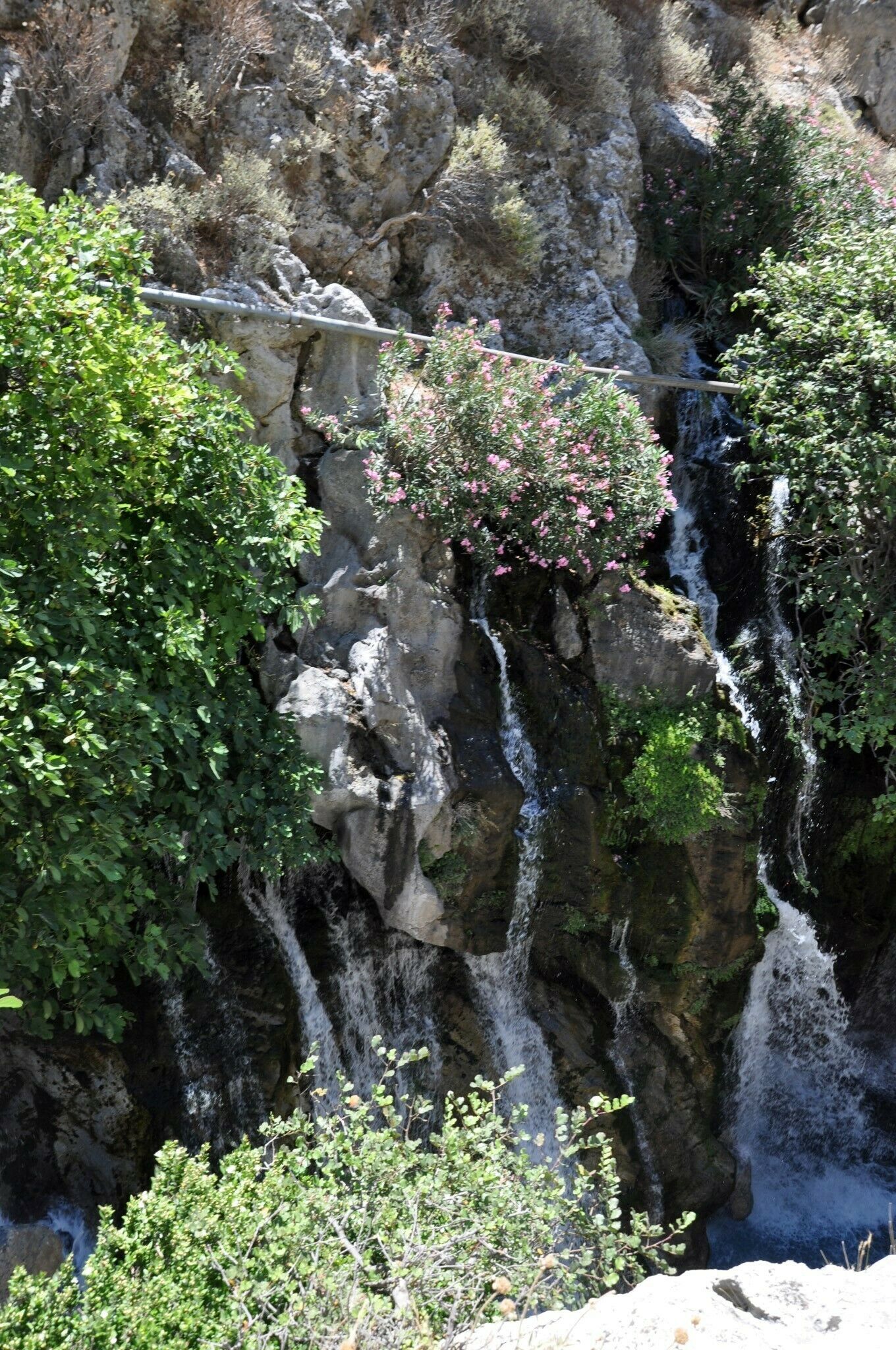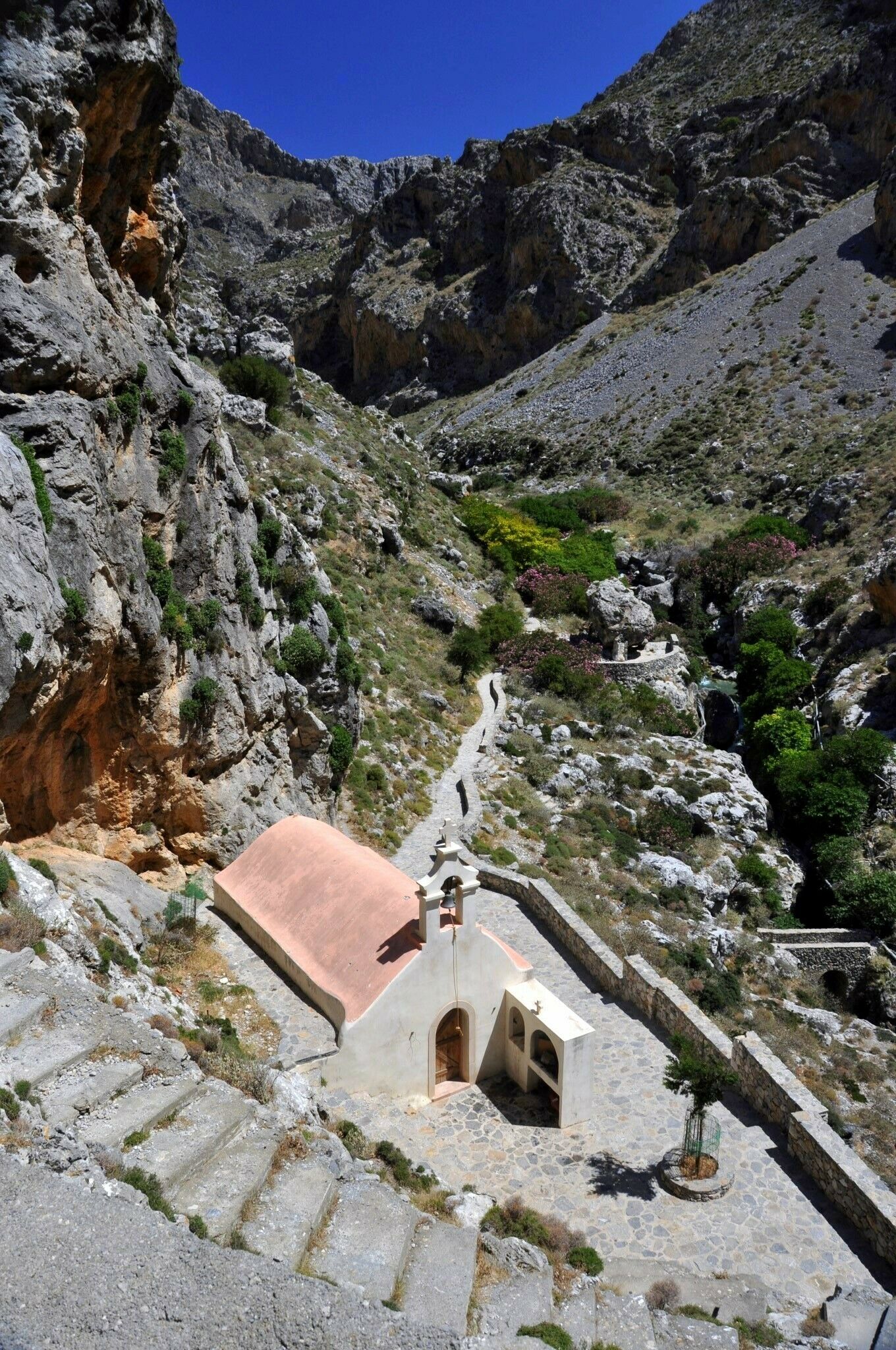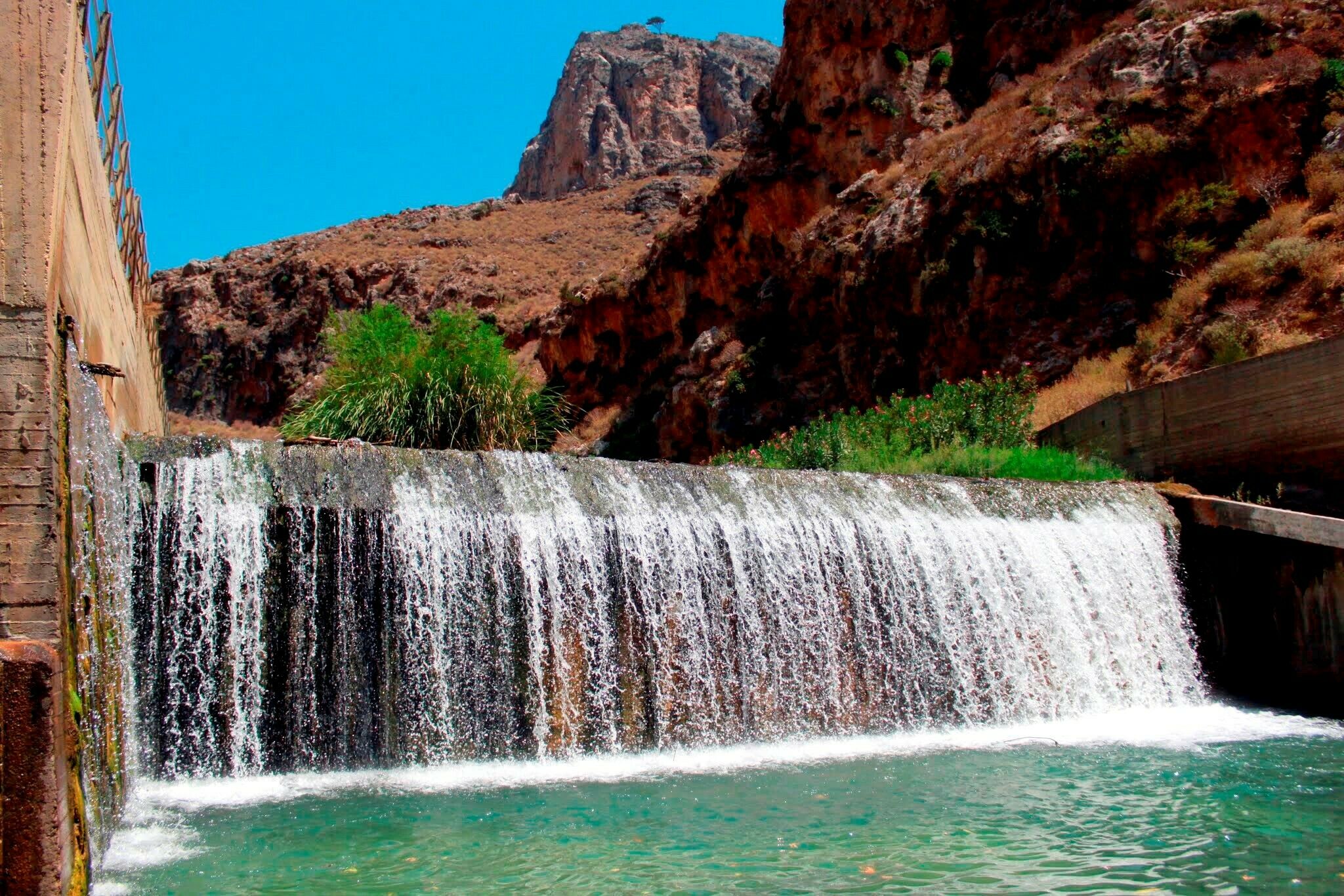"Explore the charm of Spili, where history meets natural beauty. Spili has a unique experience waiting for you to discover."
Spili is located 30 km south of Rethymno, at an altitude of 430 meters, built at the foothills of Mount Vorizis. The village has a population of approximately 800 residents, primarily engaged in agriculture, livestock farming, trade, and increasingly in tourism over the past years. Serving as a transportation hub for southern Crete, Sfeli is the capital of the Agios Vasilios province. The village provides essential services such as banks, post office, health center, and police, and it's the seat of the Metropolis of Lampi, Syvritos, and Sfakia.
In the village center, at the square adorned with centuries-old plane trees, lies the "Kefalovrysi," as the locals call it. It consists of 25 fountains shaped like a lion's head, collectively pouring 330 cubic meters of water per hour. This water, rich in iron and maintaining a constant temperature of 13°C, is a distinctive feature. Surrounding the "Kefalovrysi," there are taverns offering authentic Cretan cuisine, charming cafes, and folk art shops. One of the village's attractions is the numerous traditional water mills, with one still operational. Additionally, the EU-designated E4 trail "Sfeli - Gerakari" starts here. Near the village, you can embark on one of Rethymno's most beautiful gorges, the Kourtaliotiko Gorge, leading to the famous palm forest of Preveli.
It is said that the name "Spili" comes from the many caves in the area, especially the cave located in the northwest part of the village, in the area of Peristere. It is even mentioned that within this specific cave, there was a miraculous icon of the Virgin Mary painted on a rock, which, unfortunately, does not survive today. The village has been known by this name since the Venetian period when it consisted of two separate settlements (Panochori and Perachori).
Certainly, this is evidenced by churches with Byzantine frescoes from the 14th century located in the village's vicinity (Agios Theodoros, Agios Georgios, Transfiguration of the Savior, Panagia). The Christian devotion of the residents of Spili is also apparent from the 21 churches in the village. The Church of Saints Peter and Paul, built in 1962, serves as the village's cathedral. Noteworthy is the temple of Agios Raphael and the adjacent buildings, which also constitute the residence of the Metropolitan of Lampi, Syvritos, and Sfakia.
The proud spirit of the people of Spili, the sense of freedom that fills them, and their dedication to morals, customs, and traditions have been evident many times throughout the history of the village.
How to get to Spili
To visit Crete, one must use either an airplane or a ferry.
There are two airports in Crete, one in Chania (65 km from Rethymno) and one in Heraklion (80 km from Rethymno). Flights from all cities in Greece and many cities abroad are scheduled daily.
Additionally, Crete is connected to Piraeus through its three ports located in Heraklion, Chania, and Rethymno. Daily ferry routes are available for those who prefer this mode of travel.
To reach our village, you first need to get to Rethymno. Afterwards, you can use the KTEL buses, which operate daily routes to all villages in western Crete.
Introduction to Nature:
"I envy that wind-swept tree that its roots hold in the turmoil of the wind." (Simisakogiorgis)
Springs... springs... springs... Spili and water, synonymous concepts. A characteristic feature of the village is the abundant running water that endows it with rich vegetation and a unique character. That's why it's called "refreshing." In the center of the village, on the square with the two-century-old plane trees, is the "kefalo-vrysi" (head spring), 25 springs, 25 lion heads that flow gushing waters from their mouths. Next to them flows a small waterfall. The sight is unique, the water, one of the purest in Crete, is a delight for locals and visitors alike. Around there are twenty-nine springs!! In some, there is more water, and in others, less. Kallergianí Vrysi, Agio Pnevma, Koutsounaria, Vraski, Panochorianí Vrysi, Aghios Yannis, Vrysides, Giomatika, Fleges are just a few of the names of the springs. In all springs, the water is drinkable, natural mineral water rich in iron, without processing. The springs in Agio Pnevma and Agia Fotia always have cold water with a constant temperature of 13°C in winter and summer. Several springs have soft water because it is very light. The waters of the springs come from Vorizi, Soro, Mauriki, or from Stranghitiri.
River
Spili also has its own river that flows throughout the year. It is located beyond the main road, low, unseen from the central passage of the village. A picturesque river, full of trout for aspiring fishermen, flowing among tall plane trees, myrtles, oleanders, reeds, and majestic walnut trees. In a moment, where its passage narrows and becomes impassable in winter, a bridge of unique architectural interest is built with great craftsmanship, the Kamara Livadiotiki or otherwise the Spilian Bridge.
A river with many names. Livadiotis at its beginning, Gero-potamos (Old River) later, and finally Megalos Potamos (Great River) until it reaches the Libyan Sea, which is its final destination.
Unique Wild Herbs and Flowers
In your journey to Spili, you will have the opportunity to admire and smell many things!!!
It belongs to the borders of the semi-mountainous and mountainous zone. Starting low, you will encounter plane trees, oleanders, finakolia (type of tree), and oleanders. Moving higher, on the mountain slopes, you will see kermes oaks, lentisks, koumaries (type of tree), carobs, and asphodels. Higher up, you will enjoy with all your senses cypresses, plane trees, wild celery, valerians, wild pear trees, and the famous and now rare dittany or erondas.
It is imperative to stop at Yous ton Kambo. Here, the Vine of Syrida or Glykosyrida sprouts, an edible herb that blooms from May to September. You can consume its leaves and tender shoots raw in a salad or boiled.
At Yous ton Kambo, you will also encounter a rare tulip. Its name is Crocus oreocreticus, and its violet flowers will give you a unique sight and aroma. A festival of colors, scents, and wildlife that Spilian nature can offer you. Respect it and steal from it the joy of a gaze and at most a gentle touch. Nothing else!!
"May has its name, and April has the flowers."
Architecture
Deserted lodgings, doors closed that you endure, you remind them, closed in your arms (Simisakogiorgis)
You know something? Crete is not just coasts and beaches. There are quiet and remote corners with a different quality of life. One of these is our village. Spili has preserved its tranquility and its authentic traditional character. Walk on its uphill cobblestone paths, wander in its flagstone-paved alleys, "explore" its neighborhoods with beautiful houses built or renovated by the locals. See the roofs with tiles, the stone walls, the wells, remnants of another era that simply, wisely, and measuredly stand without disturbing the natural landscape.
In the Hani area, you will admire a large building complex, which has been designated by the Ministry of Culture as a "preservable monument of Spili." It is the mansion of Tsouderoi. It is said that it was inhabited at least since 1840, and many personalities have passed through its rooms. In your wanderings, you will also discover the mansion of Prokopis Prokopakis, a two-story building from the beginning of the century. Another impressive building of ecclesiastical architecture is the house that houses the Health Center. In the Lower Village, the house of the Spilian Priest "Papa Charalambos" with his 12 children still stands well-preserved. It is the one that gave the name Papadiana to the area. Your walk in our neighborhoods will give you a unique sense of return to something sweet and beautiful. "Arm" yourselves with your cameras and try to "capture" this feeling.
Hospitality
My door is always open, and my table is set to be seen and entered by relatives and strangers (Simisakogiorgis)
Welcome to Spili! This will be the first conversation you will hear upon arriving in this dreamy mountain village. This will be the first sample of the warm welcome you will have. The second sample will definitely be a raki! You will be welcomed with love, kindness, and a smile because they consider it an honor that you are coming to see their village. In recent years, Spili has developed a lot while always preserving its natural beauty and traditional color. It is the ideal choice for quiet, relaxing, and pleasant holidays away from the noise of the metropolis. It offers various noteworthy accommodations of all categories, rooms, and apartments for solo travelers, for romantic couples, for friendly groups, and for entire families. It has a satisfactory capacity of 55 rooms that can satisfy every visitor.
Our Tavernas
If I have wine, bread, and oil at home I sleep with my wife every night (Simisakogiorgis)
Where and what to eat
Dear travelers, are you hungry? Take a break. It's worth trying the local cuisine. You have probably heard about the Mediterranean diet that contributes to the proper development of the body and ensures longevity. The secret lies not in complex recipes but in the products used. Everything in Cretan cuisine is simple, clear, and above all, authentic and natural.
Taste our pure virgin olive oil, produced locally. Enjoy it in raw, refreshing salads with local greens (papoules, radishes, stamnagathi, korfo-koukia, daisy or bryonie sprouts). Add vinegar, salt, a few wrinkled olives (you know, the pungent ones), and your specialties are ready.
Don't forget to try the famous dakos or koukouvagia. It's a barley rusk, soaked in olive oil, salt, oregano, and fresh tomato. It is a delicious dish and very helpful for digestion.
Snails, also known as chohlioi. 90 out of the 100 snail species in Crete are found nowhere else. They are cooked in many ways, but one recipe is the best. Snails "boumbouristi," meaning fried, extinguished in vinegar or wine with rosemary. It's something else!
You are in Spili. Try to eat hare or rabbit savory, a genuine local dish that you will find only here. Its tastiness is due to its blood. It is cooked in it, with olive oil, wine, vinegar, and many spices such as laurel, cinnamon, cumin, allspice, marjoram, without adding water.
But no matter how good the food is, if you don't accompany it with a good drink, it loses something of its value. Choose our local wine. Many vineyards are cultivated in the locations of Bobori and Hasika, producing excellent wine. "It is a heavy, bitter, serious wine, it bubbles but also sweetens simultaneously. In the end, it bursts into a measured smile. It has an earthy to deep red color and retains the aroma of its grapes. It is stubborn!" says the expert Elias Mamalakis.
If you finish your meal, a raki will help you with digestion. Genuine alcoholic, exquisite distillate from grape stems (tsikouda), transparent as crystal. It is drunk like a shot. Be careful because it makes the unaccustomed dizzy.
Tourist destinations of areas to visit
In Spili, I want to find myself to drink water at the fountain Slowly sip to quench my thirst Spili Square - Kefalovrysi
Here, you will definitely stop! Under the imposing Voreis mountain, in the center of the village, a beautiful space has been created. A large, well-maintained, beautiful square with two giant perennial plane trees, a small waterfall with gushing water, and 25 gypsum lion heads from whose mouths flow crystal-clear waters - it is the jewel of our village.
It is unknown where all this water comes from. There are various thoughts and rumors. What is certain is that you will not find purer and more pristine water, as stated by the General Chemistry of the state after a special examination. It is natural spring water without processing, rich in iron, with a stable temperature of 13°C throughout the year and a quantity that is minimally affected in dry years.
So, is it or isn't it a blessed area? Hurry to enjoy not only the landscape but also the water of Spili. Our municipality has ensured an easy, quiet, and comfortable walk in the square. The central road is pedestrianized from early July to late September from 9:00 pm to 1:00 pm. During these hours, cars are served by a bypass road. We are waiting for you!
Water Mills
Of course, they could not be missing from our village, so rich in water, the water mills. The mills of Spili date back to the Venetian era, before the Ottoman rule. In 1929, seven water mills were operating. Today, two of them survive, and their view alone is worth your trip here. The "First" mill, as it is called, is located on the south side of the municipal school. A small path, surrounded by wild nature, will lead you there. Moving about fifty meters below, on the same path, amidst such vegetation that in the summer creates the feeling of a refreshing jungle, you will encounter the "Second" or "Medium" mill, which operated with the same water as the "First." A beautiful pergola, entwined with dense ivy, accompanies you on the journey.
In a dreamlike nature, two buildings, remnants of another era, will capture your interest and make you contemplate.
Holy Spirit
North of the village, behind and continuing northwest of Mount Voreis, is one of the most picturesque areas of Spili, the location Lappa. Olive trees, oaks, cypresses, lentisks, and wild pear trees blossom at an altitude of 800m. Among this rich vegetation, a surprise awaits you. A small, miraculous, very old Venetian chapel, the Holy Spirit. This chapel is associated with touching legends and miracles. It is said that workers digging to enlarge the enclosure found bones emitting a wonderful fragrance throughout the area.
It is worth visiting the area! In addition to the lush landscape, the historic chapel in the beautifully landscaped area with wooden benches and the small fountain, you can see to the right, after the Holy Spirit, in the area Kourfonera, a large cave-like hole resembling a well. If you bend down and listen, you will hear water rushing vigorously and leaving without a drop coming out.
Agios Antonios
A strange chapel that one rarely encounters. You will find it southeast of the village, in a scattered stream, small, picturesque, buried in the depression of a ravine. The people of Spili, imbued with deep faith, maintain and care for it with great reverence. Rarely are its candles extinguished. Visit it and light your own candle in honor of "Agios Antonios."
Panochoriani Vrysi (Panochorian Fountain)
After crossing the road leading to the Health Center, moving straight up the winding uphill road, you will encounter on your left a spring whose water comes out through an old picturesque fountain, the Panochoriani Vrysi. It stands there with its pickaxe jars, its stone troughs, and its carved wheels, endless years now, proclaiming the old glory it experienced. Once it gave its water to the residents of Upper Village since there was no modern water supply. It is worth seeing!
Vigla
Climbing even higher, in Upper Spili, at some point, the uphill road descends abruptly and ends in a plateau. This location is called "Vigla," meaning observatory. Here, you will be enchanted by the view. You will feel like you are on a balcony. Let your gaze travel to all points of the horizon. Spili unfolds at your feet. In the distance, you can see the Madara of Sfakia with their white peaks delineating the olive-strewn basin. On one edge of Vigla, there is a steep cliff 100m high. A wonderful place!!
Agia Fotini or Agia Fotia
It is worth visiting this place. It is a location at the eastern exit of the village. Here, there is the old Byzantine chapel of Agia Fotini, which has given its name to the broader area.
Very close, you will see the Fligia spring with its crystalline waters, which were once used in the nearby mill. Today, the water from the spring, refreshing in the summer and misty in winter, flowing, forms the picturesque river.
But the greatest interest of all lies in the mill's pergola. You will see and marvel at a building with rare architecture that is long and supported by eight large chained arches. Surely, you have never seen anything similar!
Trygiodi - Kallergiani
Above Agia Fotia, there is a panoramic location called Trygiodi. Here, there is a large spring, the famous Kallergiani Spring, with a peculiar geological phenomenon. Its water gushes out from a large rock split in two. Many many years ago, something strange happened: a colossal rock, pushed by the pressure of underground waters, opened in the middle, "cracked" from top to bottom, and water gushed out through this fissure. The northern side of this rock remained stuck on the slope behind it and did not move. However, the southern side of the rock began to lean imperceptibly but steadily towards the opposite side. The water emerging to the surface formed a small lake of limited extent. For this area, a legend circulates from mouth to mouth, saying that when this leaning side of the rock finally falls, it will kill a "girl" with her oxen who will be passing underneath at that moment. Aren't you curious to see this nature's oddity? Don't hesitate to go there!
Hiking Trails "Walking in Spili"
Do you love hiking? Do you enjoy climbing? Would you like to get up close with the rare Cretan flora? Here is the paradise for the true explorer, full of beautiful mountain trails.
Walk and climb. It's a great way to get to know Spili and the surrounding area. Crete is a mountainous island. If you don't get to know its mountains, how will you understand its character and personality? There are two E4 trails, marked by the European Union. Follow their black and yellow signs and live unique experiences.
ROUTE 20: It starts from Spili and ends in Gerakari. The total length is 18.50 km, and it takes about 8 hours to cover. The best period to traverse this distance is from March to October. On this route, you will encounter small chapels, many springs, the stream of Kissianos Gorge, the village of Kissos. You will pass by the Byzantine temple of Agios Pnevmatos, and after a relatively challenging ascent to Mount Kedros, you will reach an altitude of 1776m. The panoramic view here is fantastic. Almost the entire region of Rethymno unfolds before you. To the east, Psiloritis, to the west, the White Mountains. At the summit, there is the small chapel of the Ascension. Descending to 1500m and passing by cherry trees, you will enter Gerakari, a beautiful traditional village on the northern slope of Kedros.
ROUTE 19: It starts from the village of Agouseliana and ends in Spili. It is a 13.3 km route covered in 4 hours, on relatively smooth terrain with no difficulty. After crossing small streams under the shade of plane trees, large olive groves, and passing by chapels, stone fountains, and shrines, you will reach Mixorrouma, where you will encounter a tree-covered area full of birds. Crossing it, you will reach Spili, to the old watermills below the primary school.
Two trails, two different routes. Route 20, more challenging. Route 19, easier and smoother. Whichever you choose, the experience will be unforgettable.

